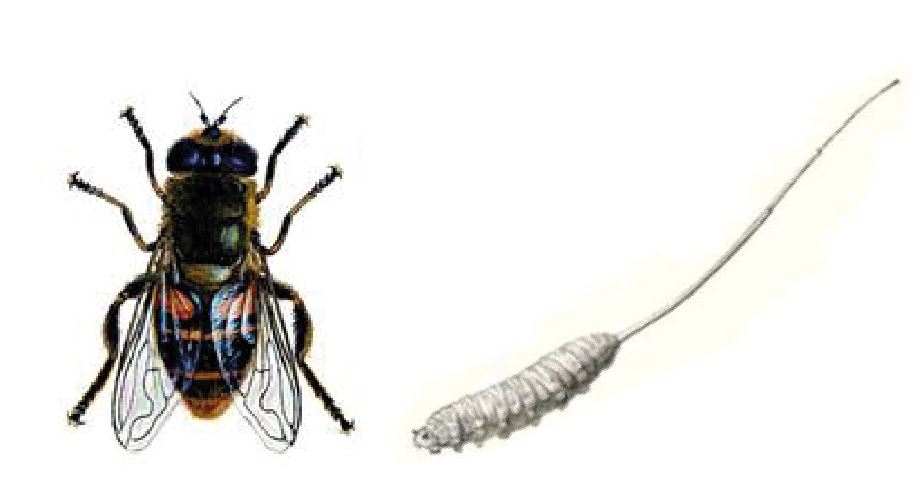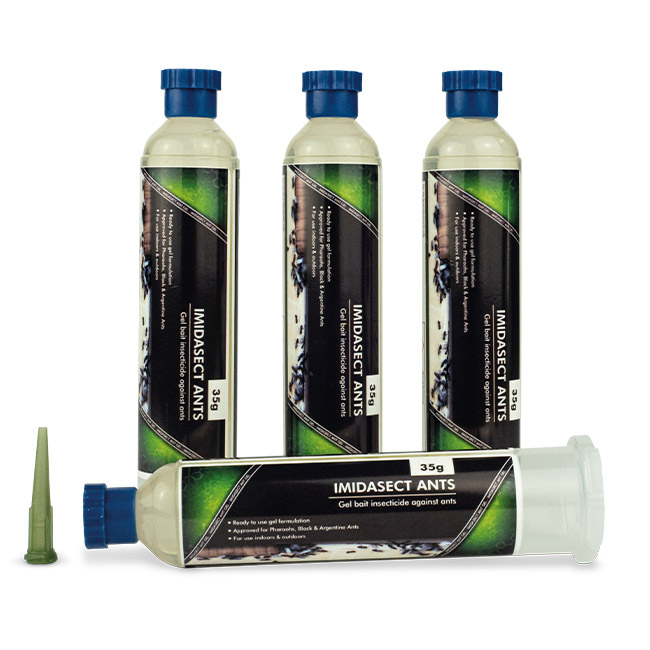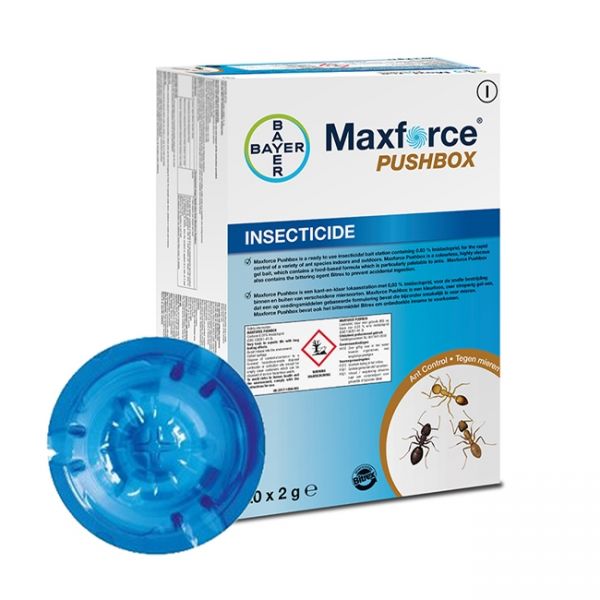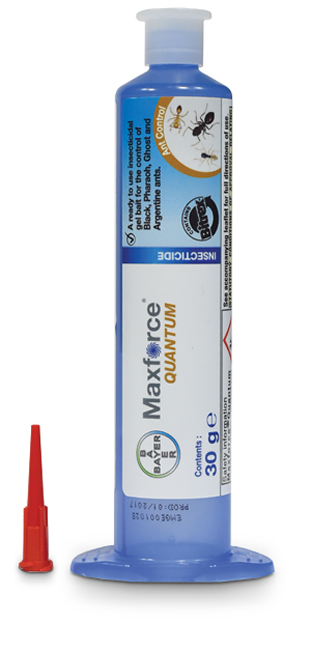Rat-tailed Maggot/Drone Fly (Eristalis tenax)
Rat-tailed Maggot/Drone Fly (Eristalis tenax)
 |
 |
Identification:
Up to 20 mm long with a tail-like breathing tube 30 to 40 mm long and grey in colour. The drone fly is up to 15 mm long and resembles the honey bee in action and appearance but has only one pair of wings. Its body is brownish to black, fairly hairy, the thorax has a yellowish tint and a vertical stripe.
Biology:
Rat-tailed maggot larvae develop through three stages, all of which have the caudal projection with a small pair of spiracles at the tip. The third stage larva is about 23mm long and 15mm wide, with eight pairs of ventral swellings (pseudopods). There is a pair of short, dark anterior spiracles. The maggot moves to drier areas to pupate. The pupae are grey-brown and have a pair of horn-like anterior spiracles as well as the caudal projection. The life cycle from egg to adult is about 30 days in the summer, with the larval stages lasting about 18 days and the pupal stage about 10 days.
Control:
Any maggots that find their way into livestock buildings are harmless livestock, pets and people. If they become a nuisance, proper sanitation and manure removal to control breeding places will help. Clean up or drain stagnant, polluted water in the vicinity so that the adult flies cannot find a place in which to lay their eggs and is also likely to reduce populations of other nuisance flies. There is usually no need for other control measures. In their natural habitat, rat-tailed maggots are more of a curiosity than a problem, and the adults are beneficial pollinators of flowers.
**Products to control Rat-tailed Maggot/Drone Fly:
|
Imidasect Ant Gel (35g tube) |
Maxforce Pushbox (20 x 2g) |
Maxforce Quantum Gel (30g tube) |



